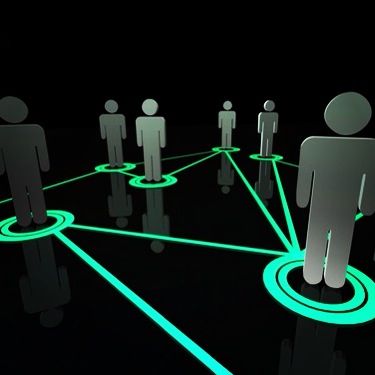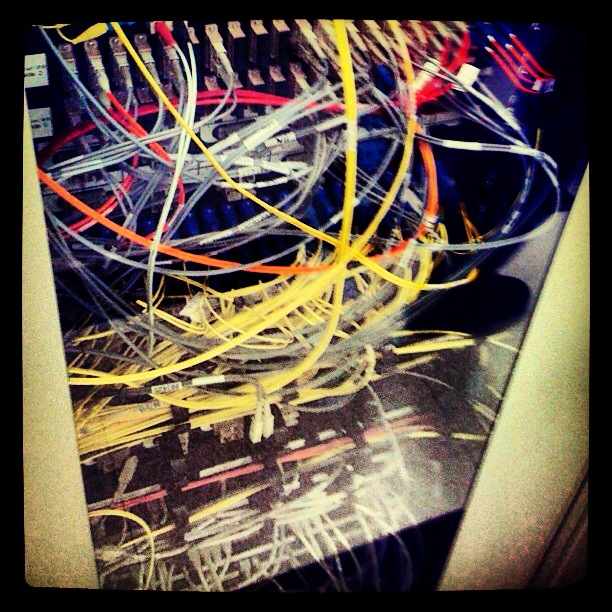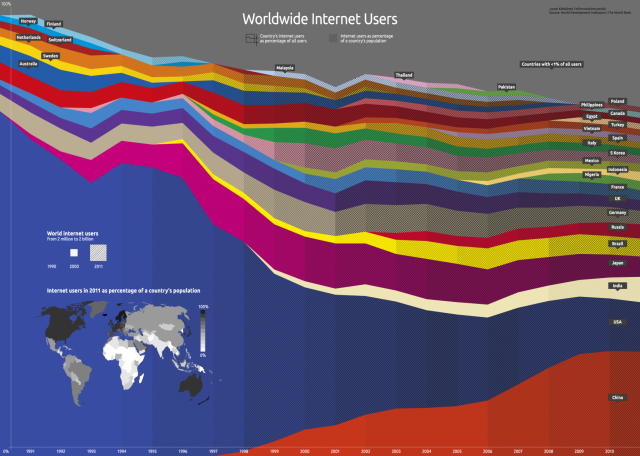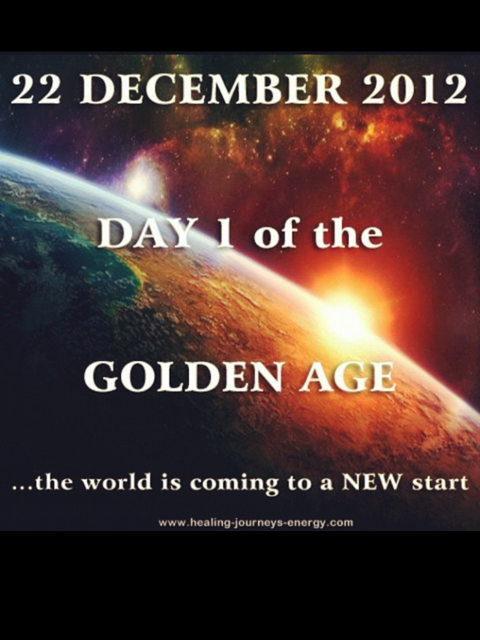EU Commissioner Neelie Kroes wrote on December 22: “We must invest in the growth sectors of the future now, to fight the crises. The Internet Sector in Europe grows with 12%/year and has the most innovative and most new starting companies“.
Problem however is that not many people have a clue what Internet is or if they do think about different things, like the World Wide Web of Apps & Cloud services. And they have a wide variety of views how “Internet” should be governed. Recently at the ITU world conference on international telecommunications (WCIT-12) in Dubai these different views came to a conflict where a number of member countries refused to sign the treaty. On the one side nation states expressed their sovereign right to regulate ( and if necessary block) internal and external Internet traffic; and on the other side countries who express the view that the Internet is by design is a transnational structure with a “multi-stakeholder” organisation to run it and further develop it. I subscribe to this latter view and will explain in this blog why and how this can and will be done.
1. What is Internet? Well according to its architects in the ISOC.org IAB and IETF working groups of engineers, it is a “Network of (autonomous) Networks (interconnected)”. In more detail it contains TCP/IP protocol based computer Networks of: ISP’s, private companies (LANs, WAN’s), Wi-Fi LANs, govt ministries, data centres, information services, WWW pages, media, telco’s, cableco’s, NRENs, social media. Its backbones consists of a dazzling complex fabric of wireless links, optic fiber cables, switches, routers and Internet Exchanges (IX’s) all over the world.
Estimate is that at present about 2.4 billion people have internet access in the world, in addition to 6 billion people who use cellphones(of which 1.8 billion are smartphones) which telecommunication networks are also IP based.
And the list of internet networks is growing fast with the recent addition of IP Networks of : smartphones, cloud computer services, sensors (sensor networks), devices (M2M, internet of things, LED lights), in-house infrastructures, TV sets, airplanes, trains, cars, etc. So for the nation states to quarrel about who controls Internet is like a few hundred fleas on the back of a gorrilla fighting about who is in control. Well, there IS no central control and it remains to be seen if we should have one. ISOC.org and RIPE are doing quite well thank you, by concentrating on those issues that need to be coordinated transnationally and which is managed in a distributed way.
2. In what direction is Internet growing? Focus of the internet is not on the importance of the nodes but on the collective effects of the links between them! Here Renan’s Law applies: “Everything wants to be connected” [Sheldon Renan on Netness, 2008]. So from this process of complex interconnections on several scales, fast organic growth (doubling of adresses and traffic volumes every 9 – 12 months), self regulation and structures that resemble those of for instance living cells in nature [Barabasi], Sara Wedeman and I see a new form of life at work all over the the world with a structure we call “The Weave”.
The Weave consists of, not only the Internet with IP connections between components on the two lists mentioned above, but also INCLUDE the following fabrics of: People (Civil Society), chains of Metropoli, Computer systems, Smart energy and water Grids, transport of people and freight. So the Weave is woven in a sustainable way from strands of transport for information, energy and matter (goods) in space and time. And the end points are included, contrary to the internet where computers are not part of it, according to the ISOC-IAB. It must be growing and built in a sustainable way since this life form is part of Nature, which would not tolerate it otherwise when it would not fit in together with others plants and colonies of insects and animals.
3. Why do we see The Weave as a life form? Because it fist into the definition of Living Systems [Wikipedia] of James Grier Miller [Elaine Parent] which is as follows (itallic: quoted from the mentioned sources):
Living systems theory [Miller, 1978] is a general theory about the existence of all living systems, their structure, interaction, behavior and development.
Living systems are open self-organizing living things that interact with their environment. These systems are maintained by flows of information, energy and matter.
‘Living systems theory’ is required to explain the nature of life, and attempts to map general principles for how all living systems work. Instead of examining phenomena by attempting to break things down into components as scientists and engineers have done for ages, general living systems theory explores phenomena in terms of dynamic patterns of the relationships of organisms with their environment. In other words: it looks at what happens when many components, insides as well as outsides, are combined (synthesis), linked and interwork. The collective emerging behaviour (synergy) is often not derivable from the characteristics of the components themselves. When a living system is taken apart and the resulting parts are disconnected the system dies. If the parts are reconnected and put together ‘life’ does not come back. That is why the subsystems described below are critical.
The essence of life is (interconnected) process. If the processing of material-energy and information ends, life also ends. The defining characteristic of life is the ability to maintain, for a significant period, a steady state in which the entropy (or disorder) within the system is significantly lower than its non-living surroundings. So the sequel to Renan’s Law is: “And living systems want to stay connected in order to survive”. We see the echo’s of this in the Internet Freedom protection projects.
Living systems according to Parent (1996) are by definition “open self-organizing systems that have the special characteristics of life and interact with their environment. This takes place by means of information and material-energy exchanges. Living systems can be as simple as a single cell or as complex as a supranational organization such as the European Union. Regardless of their complexity, they each depend upon the same essential twenty subsystems (or processes) in order to survive and to continue the propagation of their species or types beyond a single generation”.[4]
Miller said that systems exist at 8 “nested” hierarchical levels: cell, organ, organism, group, organization, community, society, and supranational system. In more detail:
{{The eight levels of living systems are: cells: a basic building block of life organs: the principle components are cells, organized in simple, multi-cellular systems. organisms: there are three kinds of organisms: fungi, plants and animals. Each has distinctive cells, tissues and body plans and carries out life processes differently. groups: these contain two or more organisms and their relationships. organizations: these involve one of more groups with their own control systems for doing work. communities: they include both individual persons and groups, as well as groups which are formed and are responsible for governing or providing services to them. societies: these are loose associations of communities, with systematic relationships between and among them. supranational systems: organizations of societies with a supraordinate system of influence and control}}
At each of the mentioned 8 levels, a system invariably comprises 20 critical subsystems, which FUNCTION to process matter–energy or information, except for the first two which process both matter–energy and information: reproducer and boundary.
The processors of matter–energy are:
- ingestor, distributor, converter, producer, storage, extruder, motor, supporter
The processors of information are:
- input transducer, internal transducer, channel and net, timer (added later), decoder, associator, memory, decider, encoder, output transducer.
In more detail: {{ The twenty subsystems and processes of all living systems arranged by INPUT-THROUGHPUT-OUTPUT processes. Processes which take place in the Systems Input Stage input transducer: brings information into the system ingestor: brings material-energy into the system. Processes which take place in the Systems Throughput Stage A. information processes: internal transducer: receives and converts information brought into system channel and net: distributes information throughout the system decoder: prepares information for use by the system timer: maintains the appropriate spatial/temporal relationships associator: maintain appropriate relationships between information sources memory: stores information for system use decider: makes decisions about various system operations encoder: converts information to needed and usable form B. material-energy processes: reproducer: with information, carries on reproductive function boundary: with information, protects system from outside influences distributor: distributes material-energy for use throughout the system converter: converts material-energy into suitable form for use by the system producer: synthesizes material-energy for use within the system m-e storage: stores material-energy used by the system motor: handles mobility of various parts of the system supporter: provides physical support to the system C. Processes which take place in the Systems Output Stage output transducer: handles information output of the system. extruder: handles material-energy discharged by the system }}
Now, our point is that this general theory can be applied to The Weave. It is a living system on the level of “transnational systems” and it contains all mentioned 20 critical subsystems, see the above three lists of networks I, II and III.
4. How will The Weave grow and evolve?
A. Best way for it to grow is to do so in a number of horizontal functional”layers” which are as independent (agnostic or ‘orthogonal’) to each other as possible. Vertical influences should be only in the quantitative sense during use. In this way the horizontal value chains can each be improved and replaced without too much changes required in the other layers. This agnostic effect is what made the IP protocol packets so successful since it de-coupled the application layers above from the digital transport layers below. A similar effect was achieved by the introduction of containers (with tag adresses) in the freight industry. How such a layering for The Weave might look like can be seen in the following figure, according to the Tillevision model architecture I introduced years ago.
B. On each layer we we see the emergence of a Mandelbrot fractal like structure of interconnected subsystems, with a repetition of certain structures on every scale. An example will be the small cell wireless-fixed network infrastructure and another example is that the in-house network infrastructure will be a small scale Internet on a home scale.
Vinton Cerf does enjoy this graphic since the other extreme from the ever smaller scale internets is a inter-planetary extension of The Weave, which he aims at to appear as soon as possible.
C. A lot of things will change on the layers of business processes, organizations and groups/teams and Sara and I foresee that as part of the worldwide Weave, interconnected “Weavelets” will emerge. Such distributed & connected organizations can turn out to be quite powerful, in the coming “European Spring” and the ‘North American Spring’, which will make the ‘Arab Spring’ and city-Occupy demonstrations look like picknicks. More about his in another blog.
D. The big question which remains to be answered is: How will the living Weavelets and The Weave itself process information in the “throughput section” mentioned above in such a way that from processing and storage a learning and deciding “collective mind” consisting of a large number of distributed entities will emerge? And maybe the future vision of even consciousness and spirit of an awakening global brain made out of all the components I, II and III listed above? Are we all part of something bigger that is alive and will wake up? This is the present Holy Grail question.
The answer can be glimpsed from how brains do this [Ray Kurzweil works on this at Google] and from other collectives like anthills, colonies of trillions of bacteria [Eshel Ben-Jacob] and for instance slime moulds [see: Brainless slime mould has an external memory] that have evolved through cooperation and group-selection [Martin Nowak] and will be published soon by Sara Wedeman and me.
Nature has solved the above question, so maybe we ourselves will recognize it soon too. Computers, people and internet networks are part of Nature now!
Jaap van Till, connectivist
Lisa Sterling and Jeff Sterling have supported this research project.












Reblogged this on kwalitisme.
Thank you.
Fantastic article, thank you!
Pingback: Transition from the Crisis 4: How to structure Weavelets (Decentral interconnected Organizations) | The Connectivist
Pingback: Evidence “The Weave” is starting | The Connectivist